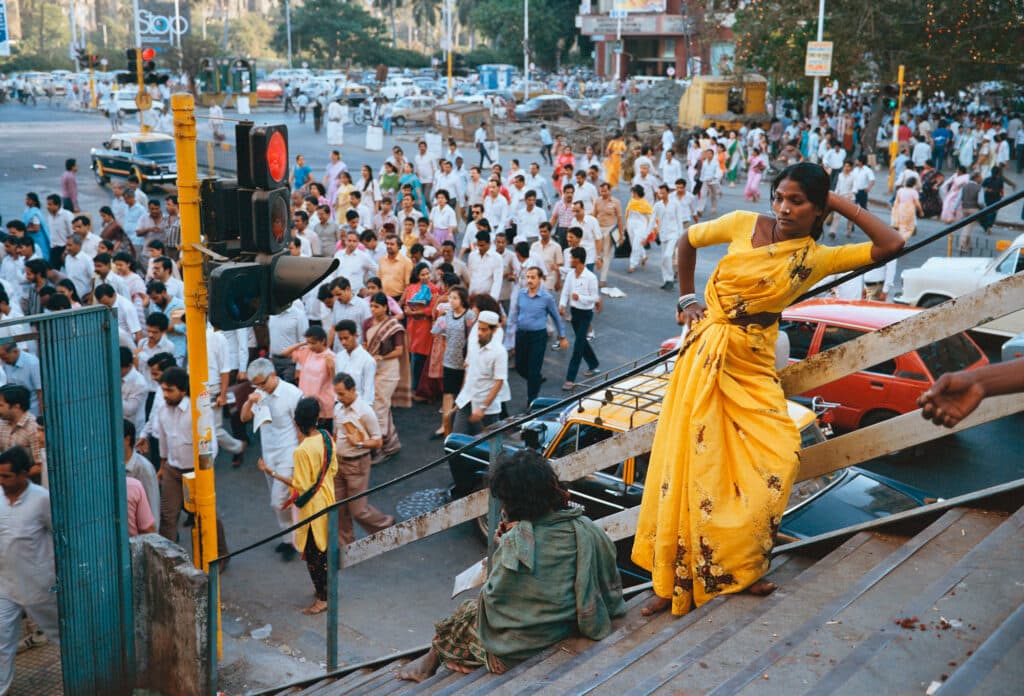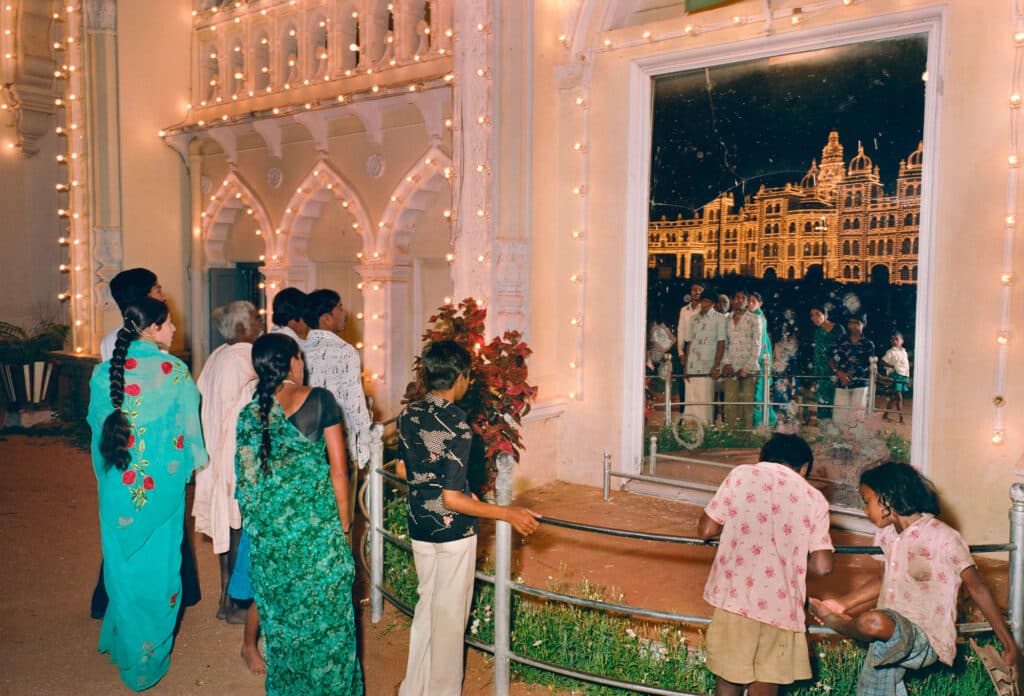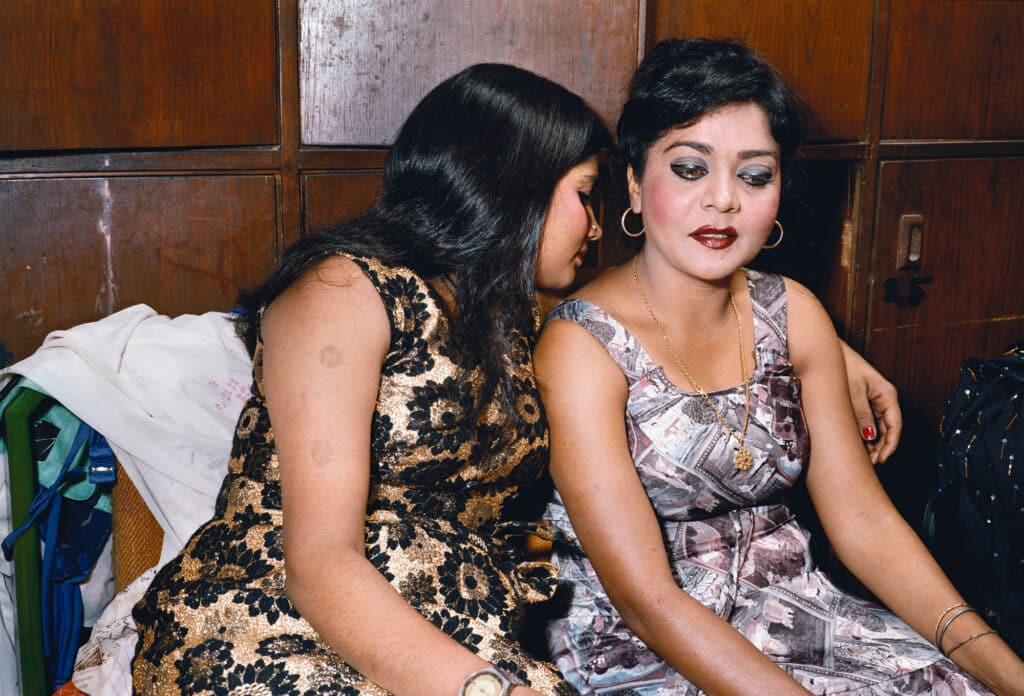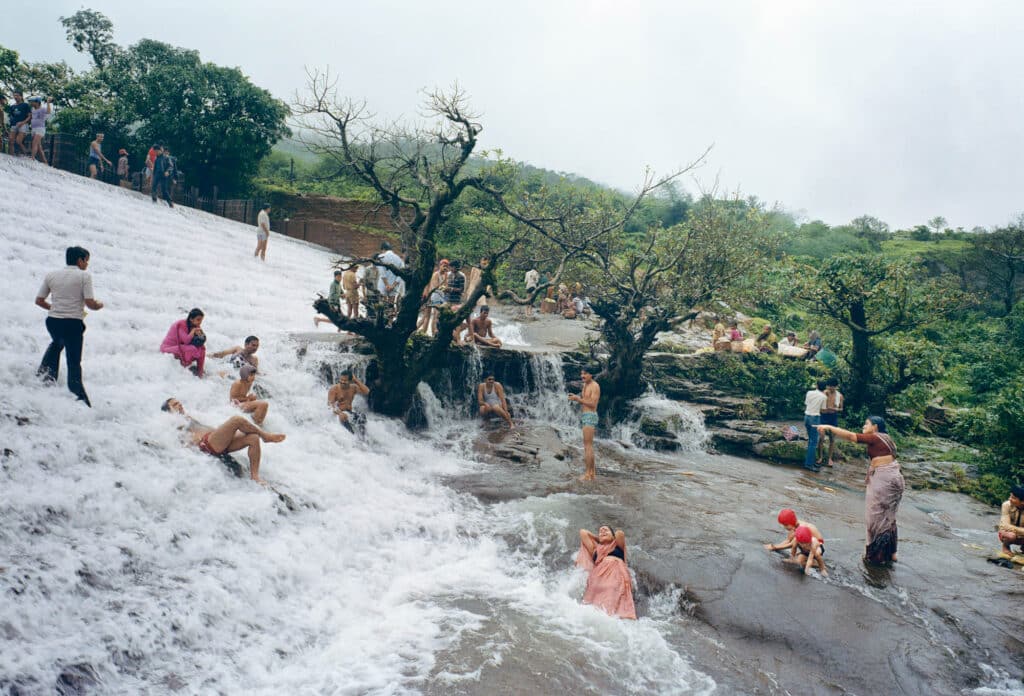
Exhibited at the Rencontres d’Arles Festival, Mitch Epstein’s “In India, 1978-1989” reveals his double vantage point as a westerner and a family member in a complex culture that is often represented one-dimensionally. A quote from his recently published book In India opens this interview, where he talks about the importance of this body of work in his life and career.
“My position as insider and outsider was especially clear one day at Juhu Beach in Mumbai (then Bombay) as I photographed a group of Indians staring up at bikini-clad white women sitting atop the sea wall of a resort hotel. The women were oblivious to the dozen or so fully clothed Indians watching them from the beach below. It was, for me, a moment of both detachment and identification: I was neither a western tourist nor an Indian, I was none of the people I was photographing; yet, I could somewhat identify with them all.”

The very first time you travelled to India was to visit director Mira Nair, who was your girlfriend at the time, then your wife. You worked there extensively during eight trips between 1978 and 1989, but you recently said that you were able to see this work differently when you revisited it in the very last years. What has changed for you?
During this time I had a multitude of life experiences, I evolved as an artist, I now see things from a different perspective. I did a book with Aperture in 1987, which was also the year that I worked on Salon Bombay, a fiction film with Mira Nair. Then I showed the work a little bit in the eighties, but after that I really put it in the closet. Detachment has served my purpose to let me see it without all the emotional baggage that was really a part of my life at that time. I think sometimes the pictures that are the most surprising are also the ones that were intellectually or cognitively a bit ahead of my perception at the time.I’m a better editor now and I have a team that I work with in my studio. I really love collaboration. In the 80s I was much more alone in terms of the editing of my work.
Can you talk about your position as a photographer, during your time working there?
You know, I was married to Mira Nair, I had a real partnership there, also collaboratively, working with her on several films. But at the same time, I was still American and I still was living between India and New York, and what I see now as a really unique privilege was being able to work in India in a way that related to how I was working in America.
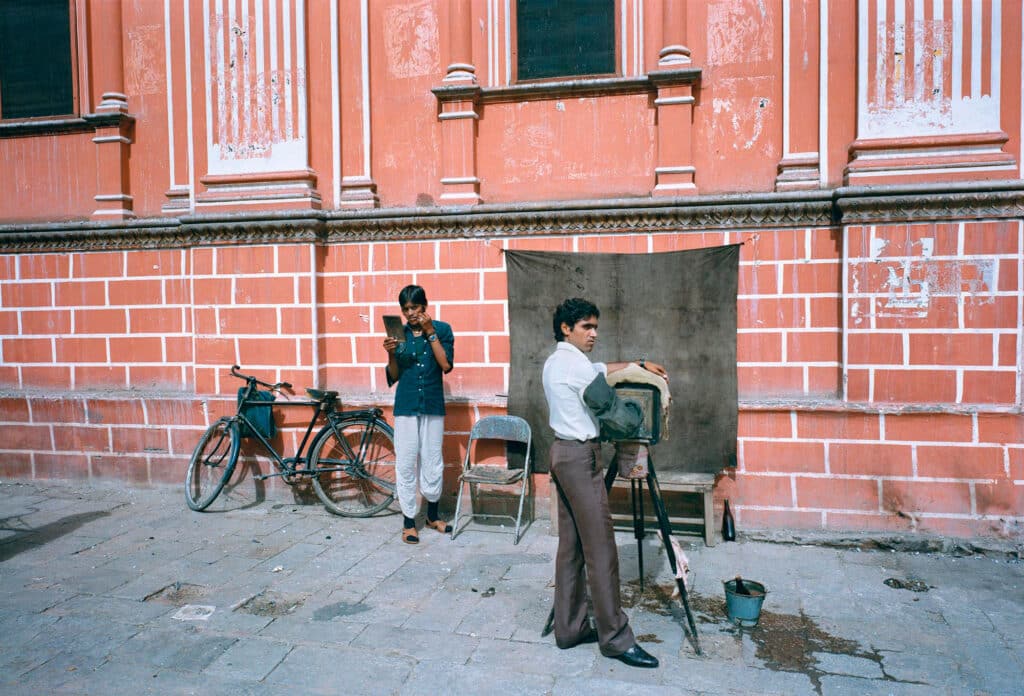
In India at the time the overriding approach, certainly with photographers coming from the outside, was photojournalistic. The sensibility was defined by a certain kind of ethnographic photojournalism on the lines of National Geographic, including Rahubir Singh, who was a great photographer, while I wasn’t in any way dictated by the terms and conditions of being a photojournalist. That wasn’t my background and I wasn’t thinking in those ways. It was much more personal.
This position also gave you access to the Indian middle class, which was harder to penetrate for most photographers, as opposed to other layers of society.
Yes, I mean, for me it was all interesting. There was no hierarchical kind of strategy. I didn’t think “This is what I should be responding to”. It was all compelling, and also challenging, because I was moving very freely and very wildly through the different stratification of Indian society and culture. I was part of a middle class family. I was inside. So part of my way of seeing India was shaped by the perspective that I gained by being part of that.
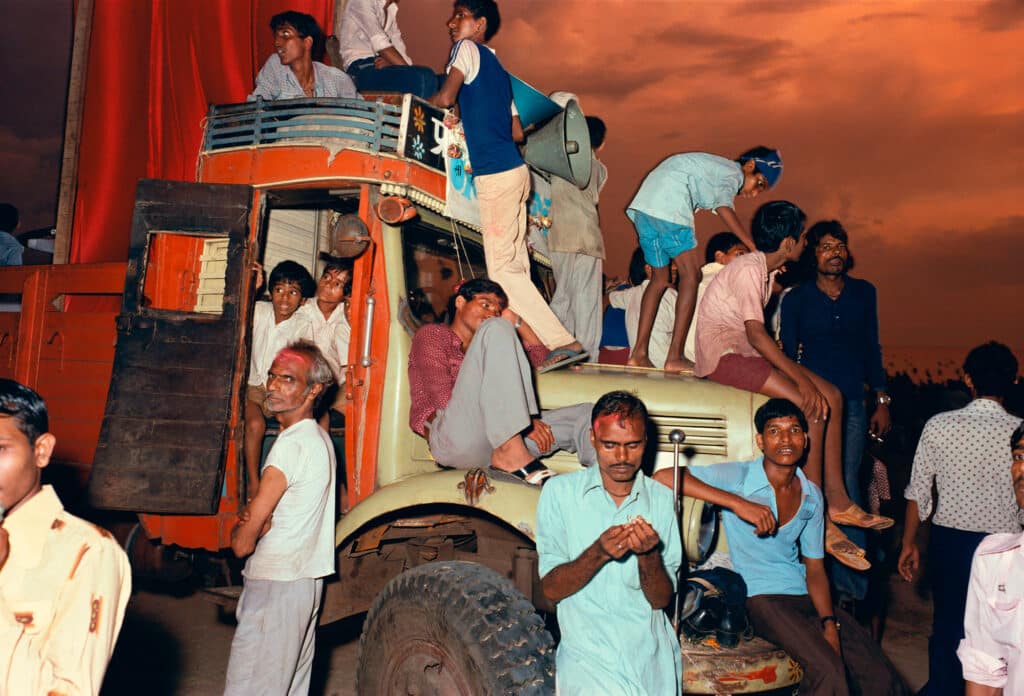
You started photographing out of curiosity and to better understand the place you were exploring, but was there one point you wanted to get across about what you saw and the experiences you were having?
Not really, because I was already very oriented to the philosophy that my preconceptions were not going to lead me in a helpful direction. I was very clear to myself that I was coming to India without a great deal of knowledge about the country and its history.
What was thrilling to me was to immerse myself in this culture and in these worlds, because India is a world made up of so many worlds, and to better understand them through the business of making pictures.
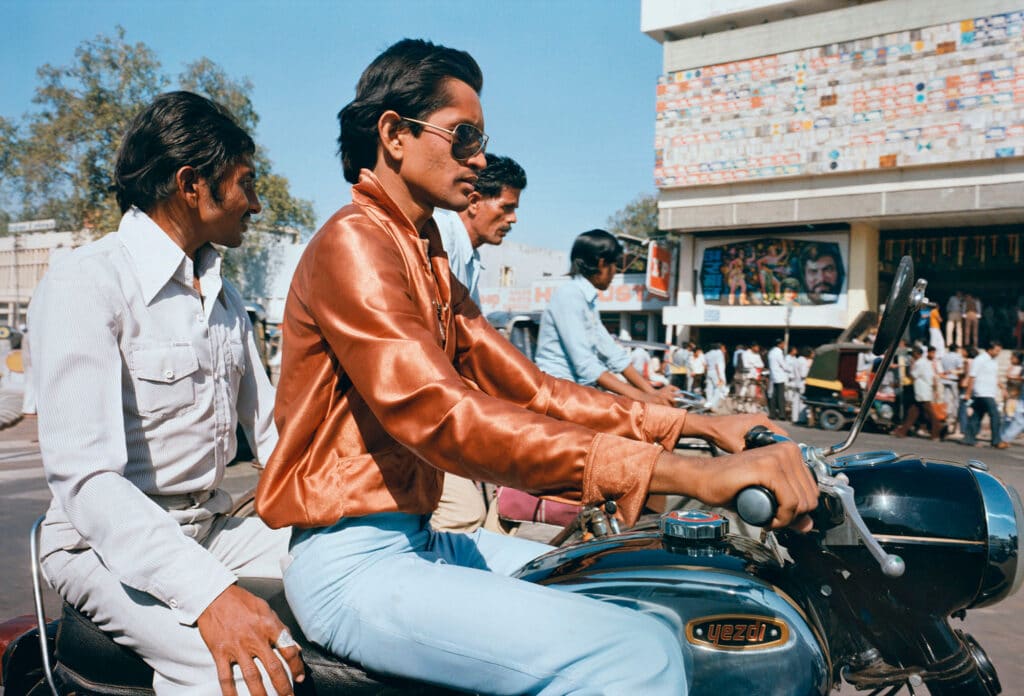
I was reading Indian literature, I saw most of the films made by Satyajit Ray, I went out of my way to see Louis Malle’s Phantom India, this intense documentary that was then banned in India because it was so direct, so brutal. So I wasn’t in a vacuum, but at the same time, India was about as far as I had ever gotten from a small New England town where I grew up and where my orientation to the world began. So I had doubts. Is it possible for me to take my knowledge and my curiosity and passion for this culture and for these worlds, and to be able to make pictures that would have any meaning to anyone other than myself? I didn’t know.
That was also what was thrilling, to put myself at risk. I very much believe in risk as being the guiding kind of host to follow, because otherwise you’re just doing the same thing again and again.
There are parallels between this work and what you did in your book Recreation, shot in the U.S. There is an attention to the human element and a respectful distance that enabled you to also show the architectural and social structure that people moved within. How did the work you were doing in India influence the way that you produce in the U.S?
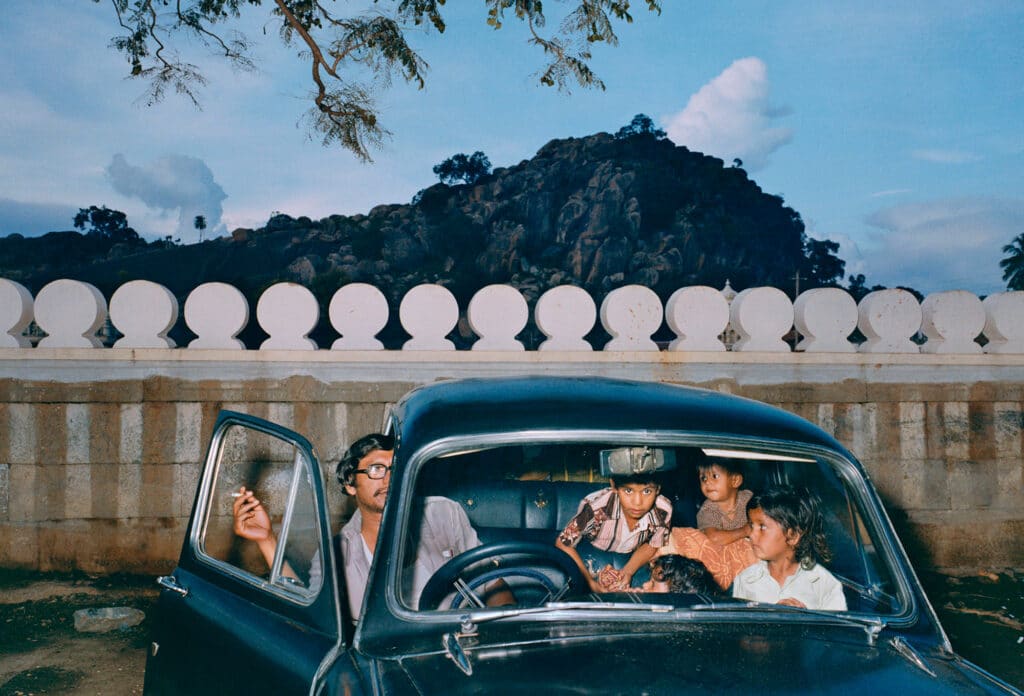
I was making those Recreation pictures in the States at the same time that I was working in India in the 80s, in a very similar way. I was out in the public landscape. I was working with a medium format camera which encouraged me to step back a bit, because of some of the technical constraints and the focal length of the lenses that I was using. But I was also thinking about building pictures that were tableau-like and layered. I looked for ways to create something pictorially that was complex and would hold my attention. The result would be a distillation of the experience that was happening, and that was also something that I was beginning to do with my American work.
The experience of working in India had a profound and unsettling, transformative effect upon my life and a tremendous influence on where I went with my work going forward. I got to see my own place here in America, and also at large in the world in a very different way, having spent time in India. But I was also working to kind of forget my Americanness when I was there, because what mattered was that I understood and found a new language for looking at this world that wasn’t my own, and yet I still had this deep kind of connection to.
Bollywood keeps coming back in your images, together with the element of the mirror. I felt that, in a way, your photos could be a vehicle to show how Indian society was seeing itself at the time, and somehow wanted to represent itself when seen from outside. Have you ever thought about them this way?
I never really thought about it in that way. I suppose there’s a sense of the individual in a way engaging with something existential, something related to the self, but I was trying to create a kind of spatial complexity, rather than a conceptual one. When I’m using the mirror I think of a photographic opportunity at hand. So much is in the details, and the process is more intuitive. The picture taken at Mysore Palace, for instance, was an occasion to look at the object of the public gaze, a kind of inner reverie, a longing for the opulence. I’m interested in authenticity, and in the sort of photographic possibility of a suggestion of narrative.
In many photographs I’m juggling between illusion and reality, and a lot of it is completely enigmatic to me, how I ended up with those pictures. But the work can only achieve that enigma if there is a kind of resolution, of clarity within the dimension of the photograph itself. If it’s just confusing, it’s not going to be mysterious.
You’ve said that you haven’t gone back to India since that period of time, and that for you it is stuck in time as it once was. If you were asked to go back now to photograph, would you accept? And if so, what would you think to focus on?
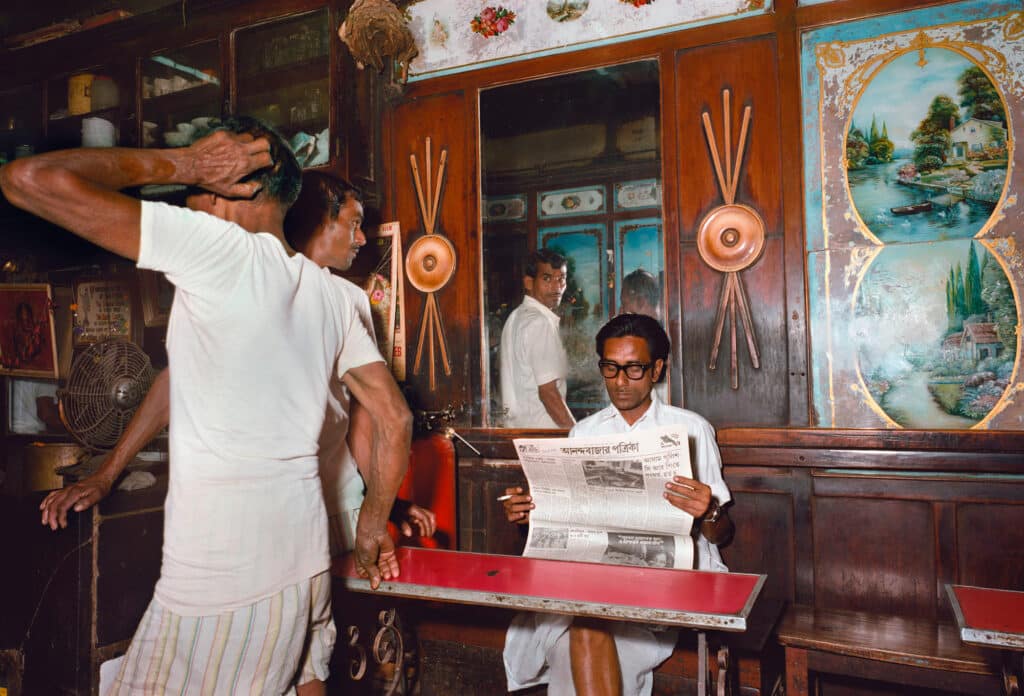
I have thought about going back to India for quite some time but, you know, having a family and a practice that has been very full, the opportunity just hasn’t happened.
It’s too abstract to think of what I’d be shooting there. I would probably be a little bit frightened of what it would be like photographically for me. I’d just have to go, and then I would see. I surely wouldn’t be able to pick up where I left off. I’m not that person that I was in my thirties, I don’t make pictures like that anymore and the world doesn’t look like that.
That period of my life came to some kind of closure. And now those experiences are ones that still remain with me, part of this larger collective unconscious that relates to how I make pictures and the way I see the world.
Mitch Epstein’s “In India, 1978-1989” is on view at the Abbaye de Montmajour, during the Arles festival, until September 25.
His book In India is published by Steidl, 144 pages, 64 images, €55.
